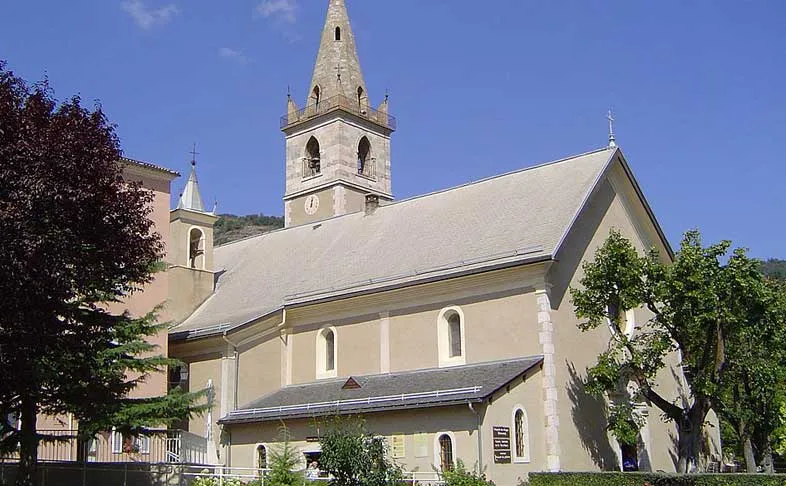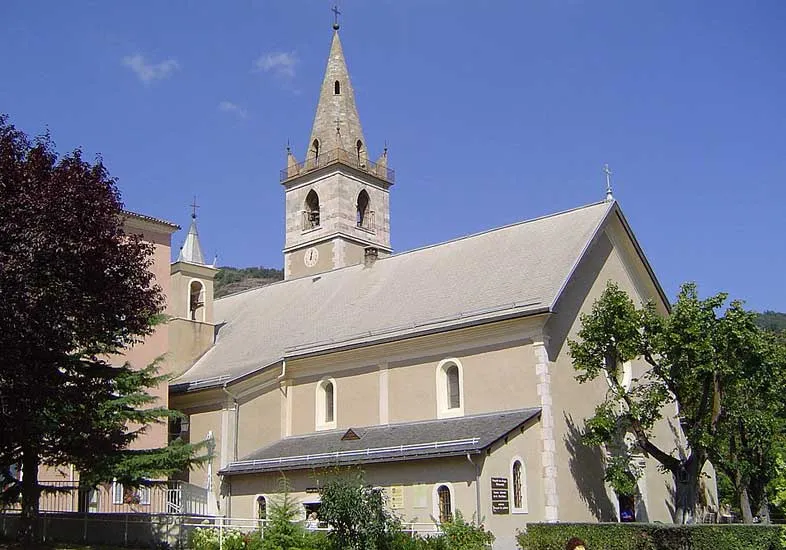
Introduction
The Marian sanctuary of Laus, Sanctuaire Notre-Dame du Laus, France or the sanctuary of Our Lady of Laus (nick named “the refuge of sinners”) is the name given to the Marian sanctuary built in Saint-Étienne-le-Laus, in the Hautes-Alpes department, on the place of Marian apparitions from Laus, to Benoîte Rencurel from 1664 until her death in 1718.
The first works began in 1666 with the construction of a first church of modest size. A convent (intended for Jesuit fathers at the start) is added, as well as various places of residence and reception of pilgrims, as well as chapels and oratories on the various places of appearances. The frequentation of the sanctuary, very important from the first years, was maintained during the centuries (with a stop during the French revolution), and largely developed after the official recognition of the apparitions by Jean-Michel Di Falco in 2008. The figure of 200,000 pilgrims was crossed in this relatively remote and eccentric place in the French Alps.
The very modest size of the main church, the “basilica of the laus”, 300 places, poses problems of reception to the persons in charge of the sanctuary during the summer periods or of strong affluence. A project for a new church was launched by the bishop in 2012, an architect’s competition organized, but the cost of the project and the low collection of donations put the initial project on hold.
This sanctuary has received many marks of recognition and notoriety from the Vatican authorities, even before the official recognition of the apparitions. Thus, authorization was given by Pope Pius IX, to perform in 1855 the canonical coronation of the statue of Our Lady of Laus, and the title of minor basilica was granted to the church of Laus in 1894 by Pope Leo XIII. Jean Guitton said of this place that it is “one of the most hidden and powerful treasures in the history of Europe”.
History of Sanctuaire Notre-Dame du Laus, France
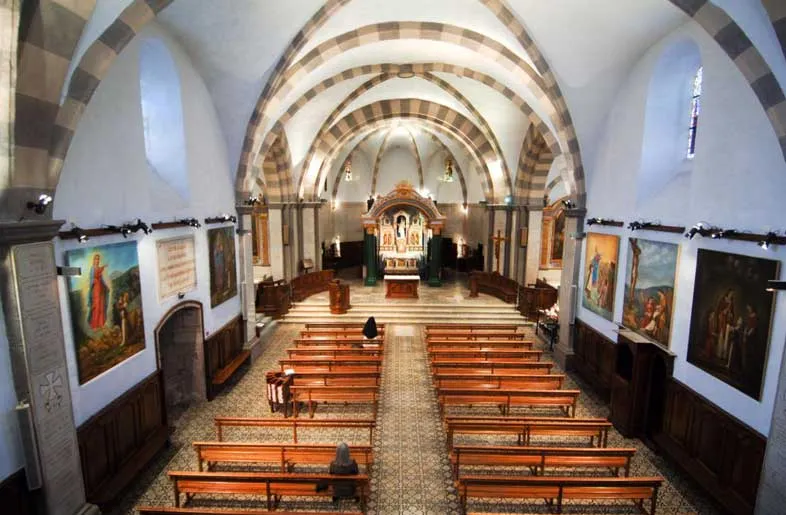
The construction of this sanctuary is linked to the Marian apparitions of Laus which took place for more than 50 years at Notre-Dame du Laus from 1664. Benoîte Rencurel recounts seeing the Virgin Mary (as well as Christ on the Cross, or other saints like Saint Maurice, Saint Barbara, Saint Joseph, Saint Gervais and Saint Protais, the Child Jesus, Saint Catherine of Siena, angels, even the devil). These apparitions lead in a few years to the arrival of a crowd of pilgrims. From 1666, a sanctuary was built containing inside the small chapel where the Virgin appeared to Benoîte Rencurel. Between 1665 and 1667, 130,000 people went there.
This place has become “a refuge for sinners”, according to the very words that the Virgin Mary would have addressed to Benoîte when she said to her: “I asked my Divine Son for this place and He gave it to me granted for the conversion of sinners . Thus, for the Church, this sanctuary is “a place of mercy”. From its foundation, and according to the words reported by the visionary: “Let yourselves be reconciled!”, the sanctuary is a place that calls us to live “reconciliation in our whole being: relationships with God, with others, and with ourselves, but also with the body, with time, with the celestial world”.
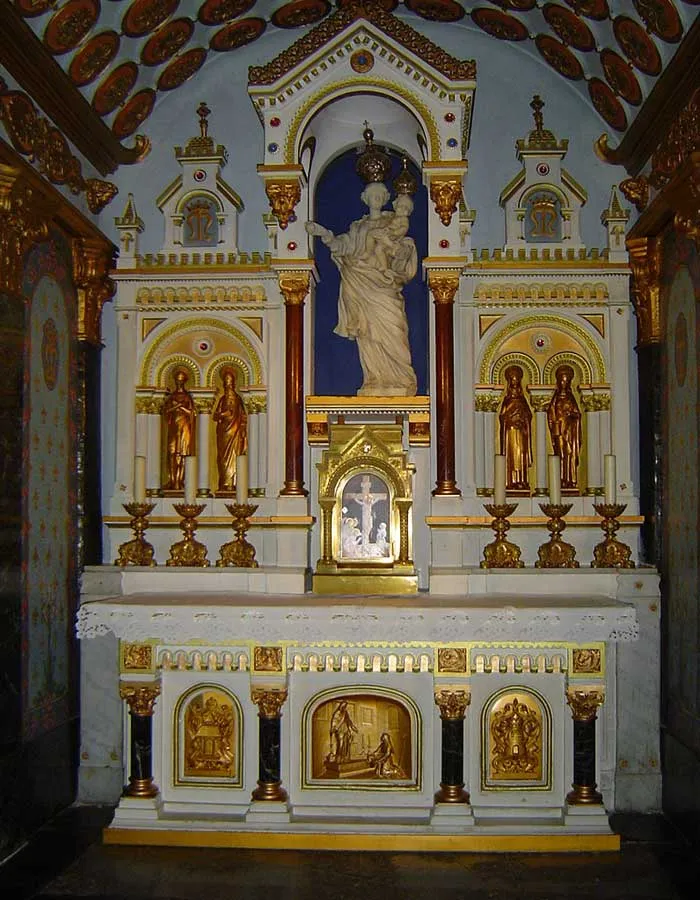
In the 21st Century
May 4, 2008, Jean-Michel Di Falco, bishop of the place of the apparitions, proclaims the official recognition of the apparitions of Our Lady of Laus.
Since October 12, 2008, to help the priests in their ministry, a team of Benedictine Sisters of the Sacred Heart of Montmartre also sings the songs of the offices (lauds, mass, vespers and compline) during which the psalms are accompanied by the psalmodion, a musical instrument derived from the zither.
September 5, 2010, Jean-Michel Di Falco welcomes the new rector and the new chaplains of the basilica on the occasion of the great solemn feast of the Nativity of the Virgin Mary, a feast normally celebrated on September 8 but also anticipated to the Sunday which precedes the sanctuary. The new rector, Father Ludovic Frère, then succeeded Father Bertrand Gournay who had himself succeeded Fathers Élie Mathieu and René Combal.
November 6, 2015, André Léonard, archbishop emeritus of Mechelen-Brussels, becomes auxiliary chaplain of the sanctuary.
Since the official recognition of the apparitions by Jean-Michel Di Falco in 2008, attendance at the sanctuary has increased sharply, exceeding in 2015 the 200,000 annual pilgrims. A new church building is planned to accommodate the faithful. The collection of donations is in progress.
The Sanctuary
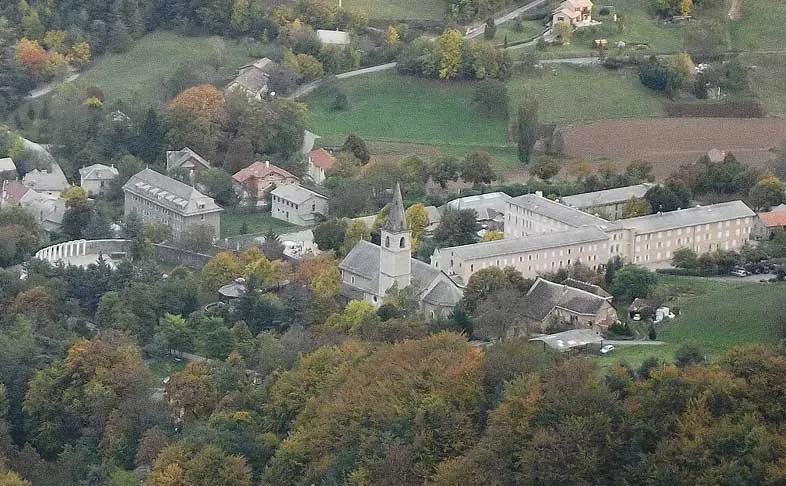
For more than 300 years, pilgrims have followed one another in this place where the sanctuary is made up of a set of buildings and places spread over a large territorial area. This dispersion is linked to the multiple places of apparitions of the Virgin at Benoîte (the basilica, the chapel of the valley of the Fours, Pindreau) but also other places of apparitions or visions (such as the chapel of the Precious Blood, the col de l’Ange), but also the places where Benoîte lived (her birthplace, the house where she lived from 1673) or the coronation oratory which are all places of devotion and pilgrimage for visitors and believers.
The Basilica
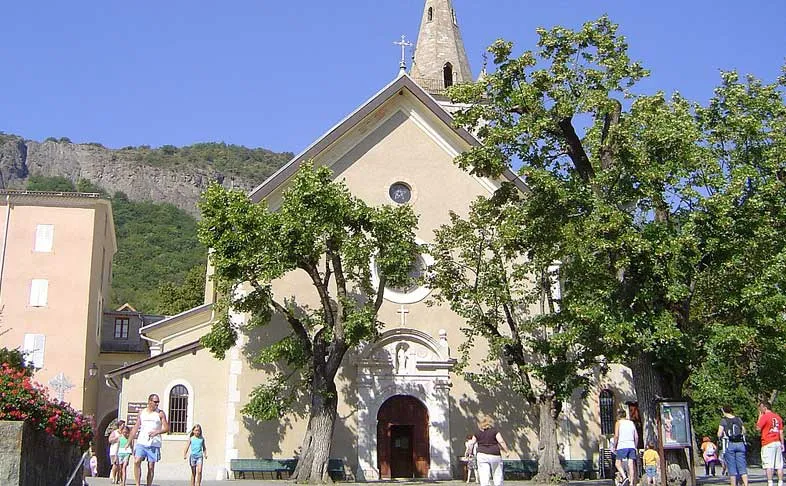
The basilica was built around the “chapel of Bon-Rencontre”, one of the main places of apparitions of the Virgin at Benoîte.
From 1666 to 1669 a first church was built around the chapel to accommodate the faithful. The current building is an extension of this church begun in 1666 and which included only the current nave and a wall which supported a bell.
This first church, of small size, was built with the authorization of the bishop, after an investigation by his vicar in 1665 to study the authenticity of the visions. This church will undergo some enlargements and developments, which however leave it a modest size of 300 places. Its small size did not prevent Pope Leo XIII from raising this Marian sanctuary to the dignity of “minor basilica” in 1892.
This basilica is the central point of the sanctuary of Notre-Dame du Laus. It also contains the tomb of Benoîte Rencurel, currently undergoing beatification.
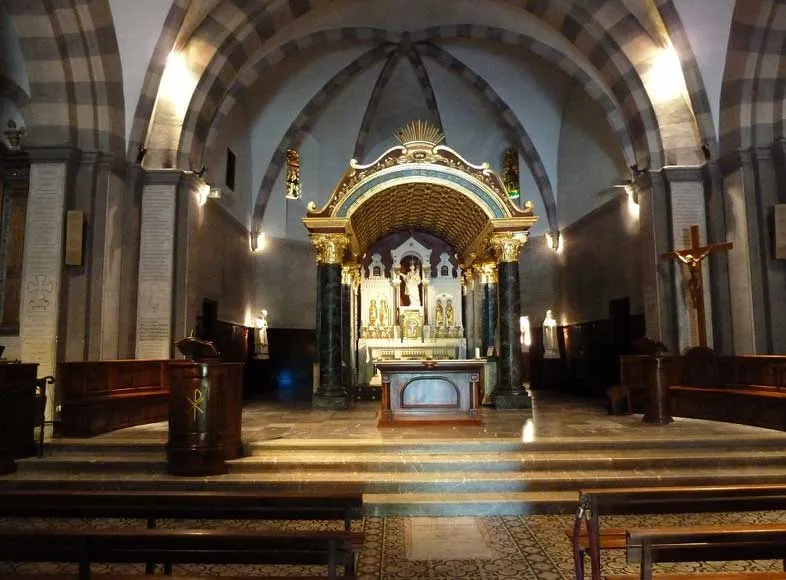
The New Church Project
The current basilica offering only 300 places, a new religious building is under study that can accommodate up to 3,000 people.
To celebrate the 350th anniversary of the first apparition, an architectural competition was launched in 2012 by Jean-Michel Di Falco for a project for a new church. The winning team is made up of architects Philippe Madec, Hélène Jourda and Marc Barani, as well as Jean-François Pousse (liturgy), Nicolas Bonnenfant (landscape designer), Alain Bornarel (sustainable development), Jean-Marc Weill (structure), Éric Hutter (fluids) and Walter Köller (acoustics). The other competing team brought together in particular the architects Rudy Ricciotti and Dominique Perrault. The jury consisted of Jean-Jacques Aillagon, François Pinault, Dominique Ponnauand Jean-Michel Di Falco.
The first phase of work includes in particular the redevelopment of 30,000 m2 of outdoor spaces and the construction of a modular church with 2,500 wooden seats. The second phase, planned for the long term (thirty years), consists of the development of an additional 5,000 m2 of outdoor spaces, a cloister, a conference building, accommodation areas for pilgrims and housing for elderly priests. The project is valued at ten million euros for the first phase and thirty million euros for the whole, financed by donations and patronage.
But from 2016, the launch of the project is delayed due to a lack of funding. According to the diocese, the pledges of patrons would experience delays and cancellations, preventing the start of work. Additional costs related to construction would also have inflated the note. In 2017, the new bishop, Xavier Malle, announced a “reorientation of the initial project” in order to take into account the discrepancy between the collection of donations and the cost of the project. Pending the construction of a new church to accommodate pilgrims, the current basilica being too small, the diocese has decided to rent a large tent to celebrate masses there during the summer season.
Our Lady of Laus
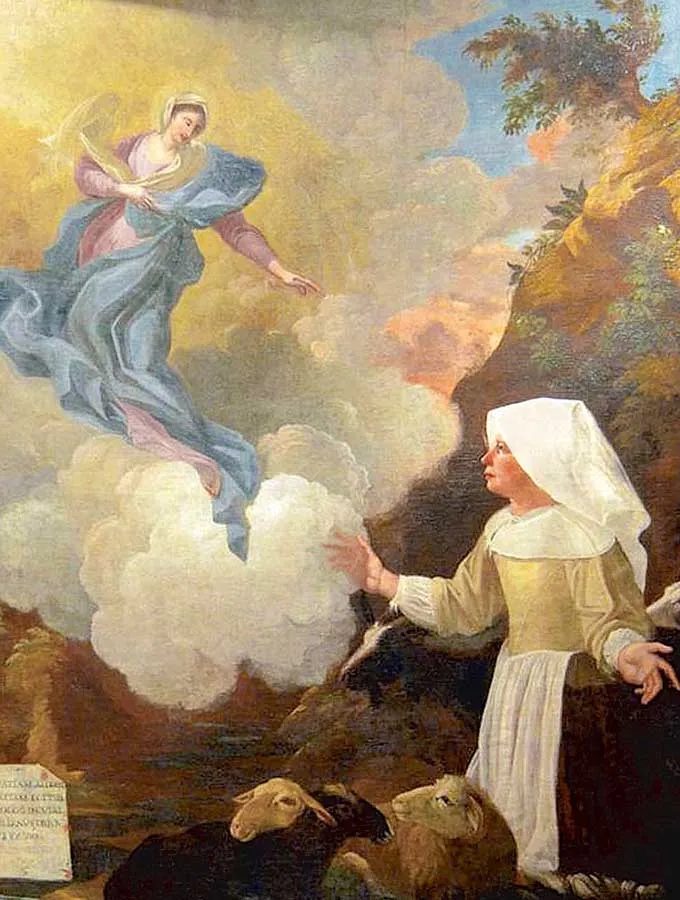
Our Lady of Laus (French: Notre-Dame du Laus) or Refuge of Sinners denotes Marian apparitions that took place between 1664 and 1718 in Saint-Étienne-le-Laus, France, to Benoîte Rencurel, a young shepherdess. The apparitions were approved by the Holy See on 5 May 2008. Pope Pius IX granted a Canonical Coronation to her marble image on 23 May 1855.
Situated in Dauphiné, in southern France at the foot of the Alps, just southeast of Gap, is the valley of Laus. Its name means “lake” in the local dialect, as there once was one at the bottom of the basin. In 1666 the hamlet held twenty households scattered in little huts. The inhabitants had built a chapel dedicated to the Annunciation, Notre-Dame de Bon Rencontre (means Our Lady of the Good Encounter, the Annunciation).
Our Lady of Laus asked for sinners to do penance, a chapel of Eucharistic adoration to be built so Jesus could convert sinners, and a house for priests to be built so the priests could administer the sacraments to sinners.
At the heart of the message given to Benoite is a conversion of souls which aims to bring full reconciliation with oneself, with others, and with God.
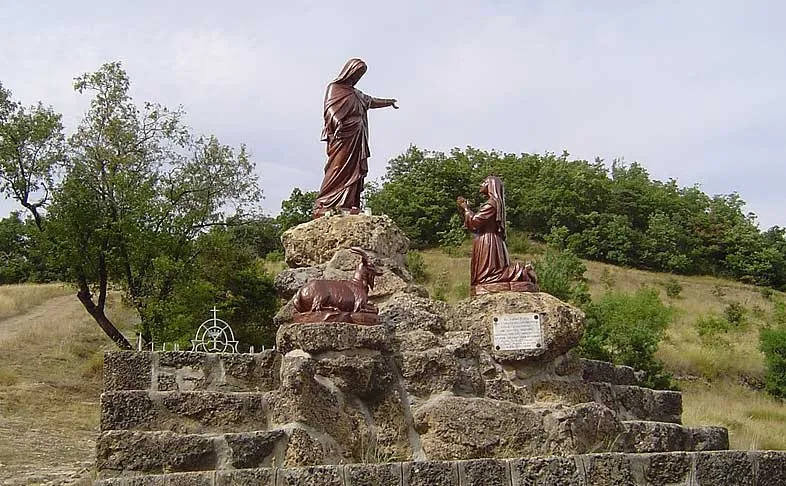
Places of Apparitions
The chapel of “Notre-Dame-des-Fours” is located southeast of the village of Saint-Étienne-le-Laus. The road leading to it is bordered by a Stations of the Cross, along the Grand-Bois torrent.
This chapel is built on the site of the very first Marian apparitions at Benoîte Rencurel, in May 1664. At that time, Benoîte went to the valley known as “des Fours” to graze his sheep there. The shepherdess has the habit of reciting her rosary while she keeps her animals. In one of the caves of the site, she suddenly sees “a lady”, holding her child in her hand. Benoîte thus describes the one she will call “the beautiful lady” she is dressed in flaming gold leaf, she seemed to wear a sparkling crown and her face was so luminous that one could not determine her features with precision.
After several months of appearances at the little shepherdess, “the lady” asks Benoîte to organize a procession to this place. Benoîte transmits the request and obtains from the village priest the organization of the procession to this cave on August 29, 1664. The procession brings together the whole village, and Benoîte witnesses a new apparition. It is during this apparition that the lady announces to the clairvoyant that her name is “Lady Mary, and that she would not see her again for some time”.
It is in the first place a simple oratory which is built by the inhabitants of the place. But over time, it had deteriorated greatly and threatened to fall into ruins, so much so that the bishop had a second one built below. Finally, it will be this small chapel that will be rebuilt to allow pilgrims to come and worship at this place of appearance. The cave “of the apparition” no longer exists today, the erosion of the land having slowly erased the place.
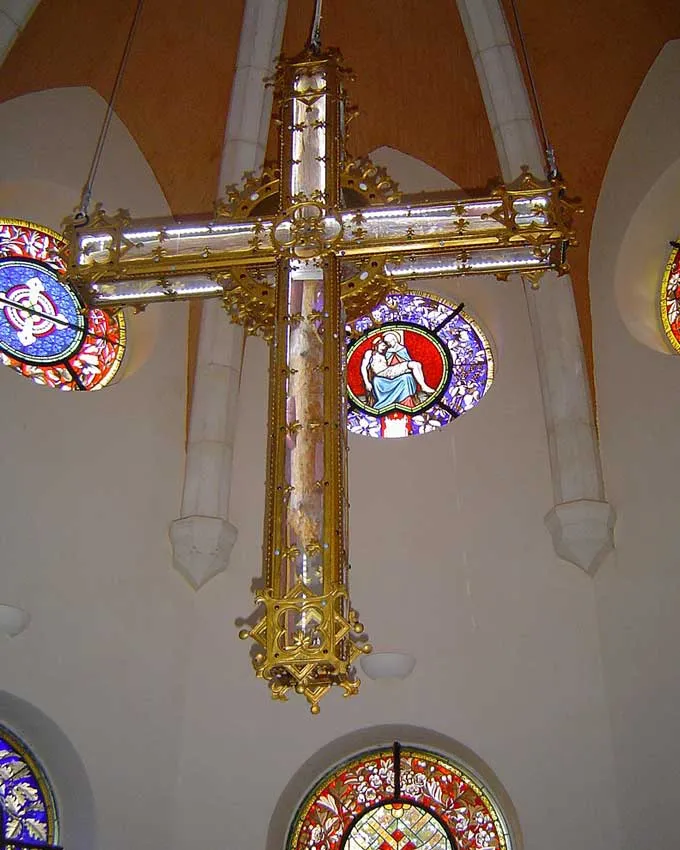
Veneration
A few of the saints who have had a particular devotion to Our Lady of Laus include Saint Eugène de Mazenod (1782–1861), founder of the Oblates of Mary Immaculate; and Saint Peter Julian Eymard (1811–1868), founder of the Blessed Sacrament Fathers and of the Servants of the Blessed Sacrament. When Saint Peter Julian was eleven years old he made a sixty-kilometer pilgrimage on foot in order to pray for nine days at the shrine while preparing for his First Communion. Later he wrote, “That is where I first came to know and love Mary.”
On May 5, 2008, Bishop Jean-Michel de Falco Leandri, Bishop of Gap, announced the Holy See’s recognition of the apparitions as Our Lady of Laus, Refuge of Sinners.
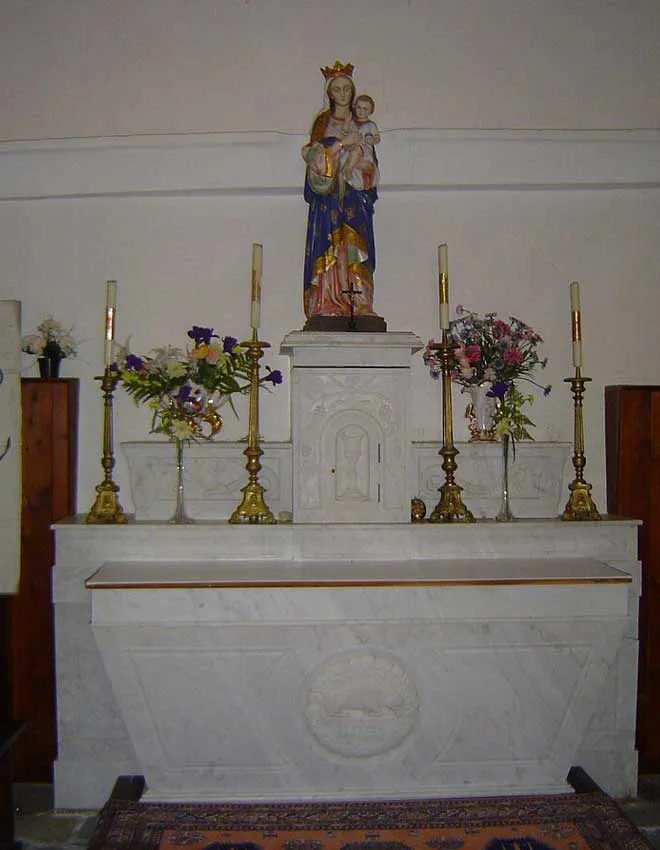
Pindreau
September 29, after a month of absence, the Virgin appeared again on the other side of the valley, on the Pindreau hill. She asks Benoîte to “look for a little chapel in Laus, where sweet smells float, and to come and pray to her there. That there she will talk to her and meet her very often”.
The monument that we see today is the work of the International Artistic Union of Vaucouleurs. It was built in 1926.
Chapel of the Precious Blood
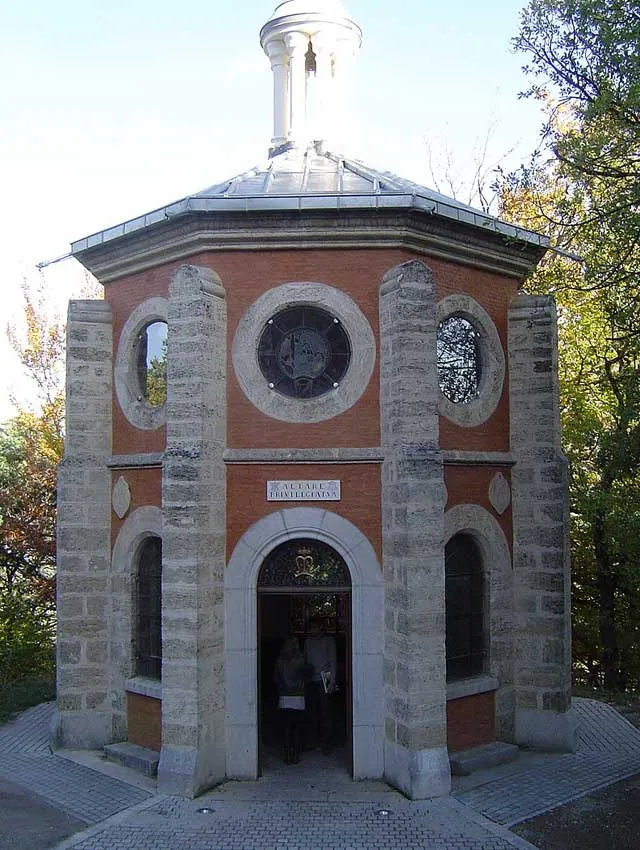
In July 1673, Benoîte sees Jesus Christ fixed to the Cross and she feels inundated with his blood. She finds herself suddenly stiffened, each week in the pose of crucifixion and remains thus from Thursday to Saturday, without being able to make a move. This “mystical crucifixion” will last from 1673 to 1684.
This cross is subsequently moved several times. Two natives of Touraine and renowned botanists, the brothers Charles and Edmond Tulasne, built a chapel with their own funds to protect this cross. The chapel was consecrated on September 16, 1862 by Victor-Félix Bernadou, Bishop of Gap.
This chapel was completely restored in 2010-2011 thanks to funding of 200,000 euros received from the proceeds of the first album Spiritus Dei by the group Les Prêtres. The chapel was then blessed on May 1, 2011 by di Falco on the occasion of the 3rd anniversary of the official recognition of the apparitions of Our Lady of Laus.
Coronation Oratory
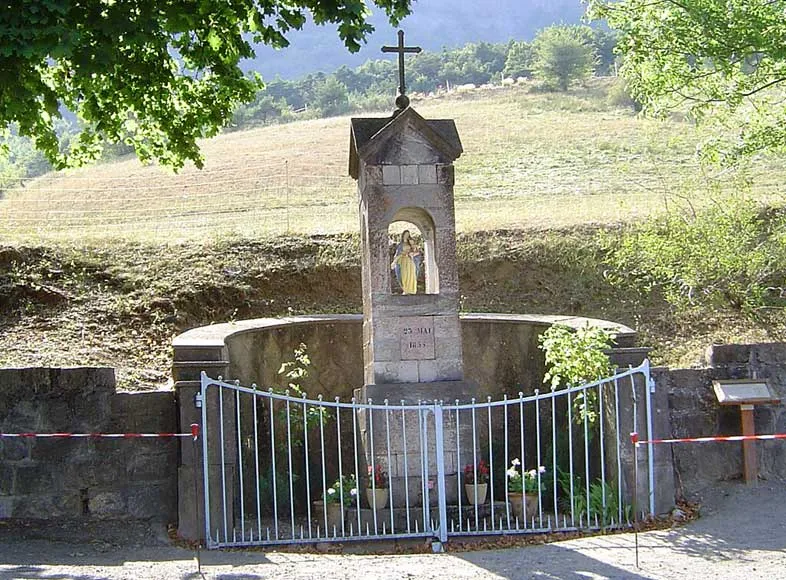
The pope can authorize the canonical crowning of a statue or a painting, the crown being a sign of royalty and victory. The coronation is performed during a ceremony where the pope sends his apostolic representative. The first crowned statue in France is that of the Notre-Dame-des-Victoires basilica in Paris, on July 9, 1853 at the request of Pope Pius IX in gratitude for the deliverance of Rome by the French troops.
The statue of Notre-Dame du Laus was crowned on May 23, 1855in the name of Pope Pius IX. The ceremony brought together 40,000 people including 600 priests around Cardinal Ferdinand-François-Auguste Donnet, Archbishop of Bordeaux, Pierre-Marie-Joseph Darcimoles, Archbishop of Aix , Jean Marie Mathias Debelay, Archbishop of Avignon, Luigi Fransoni Archbishop of Turin in exile in Lyon, Marie-Julien Meirieu, Bishop of Digne, Jacques Ginoulhiac, Bishop of Grenoble and Jean-Irénée Depéry , Bishop of Gap.
The oratory which recalls this event is located at the foot of the large lawn where the 40,000 people present were seated. The 14th painting inside the basilica represents the scene.
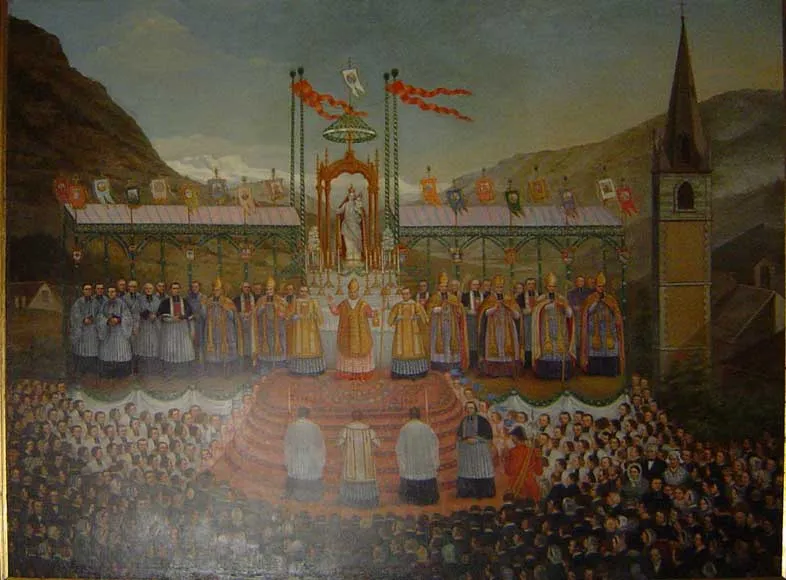
A Place of Pilgrimage
The site of Notre-Dame du Laus welcomes between 120,000 (in 2008) and 200,000 people (in 2015) each year, a number that has grown rapidly since the recognition of the apparitions.
Pilgrims are welcomed by a team of priests from the diocese of Gap and Embrun where the sanctuary is located. They ensure the liturgy, listening, confessions, visits, masses and services. The sanctuary is indeed the heart and lungs of the diocese of Gap; five priests out of thirty active in the department live there; the seminarians of the diocese also have their house there.
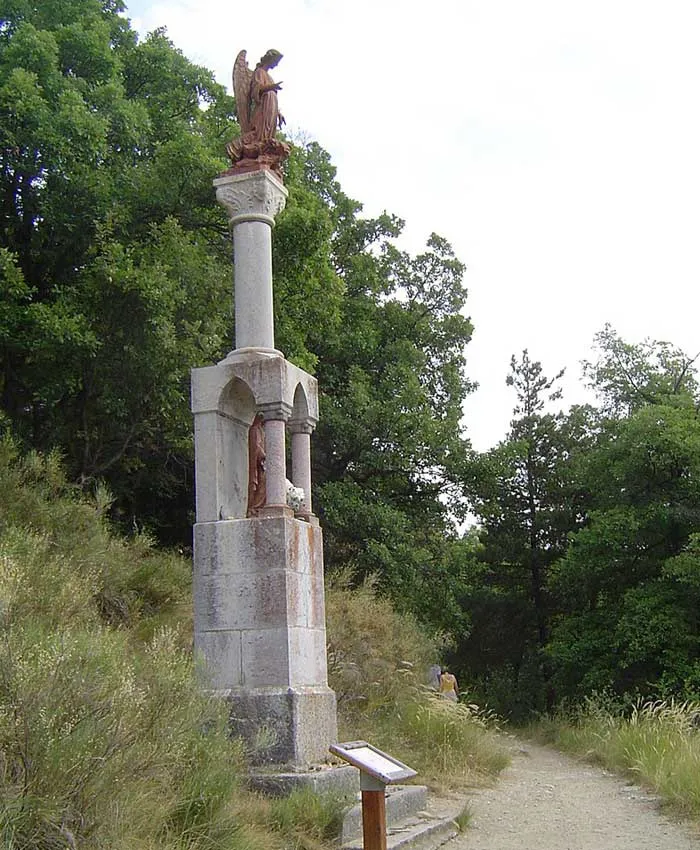
Notoriety
In 1854, the same Jean-Irénée Depéry obtained from Pope Pius IX the authorization to crown the statue of Notre-Dame du Laus. The ceremony is held on May 23, 1855 attended by 40,000 pilgrims. On March 18, 1894, the main church of the sanctuary was raised to the title of minor basilica by Pope Leo XIII.
Jean Guitton declared that this sanctuary was “the most hidden and the most powerful sanctuary in Europe”.
Today more than 200,000 pilgrims and visitors come to this pilgrimage site each year (2015 figures). The Laus is always and more than ever a place of conversion, transformation, regeneration and profound discovery of divine mercy.
Feast Day – 1st May
Annual Feast Day of Our Lady of Laus (Notre-Dame du Laus) is celebrated on 1st May.
Mass Time
Weekdays
Sundays
Church Visiting Time
Contact Info
758 Grande Rue, 05130,
Saint-Étienne-le-Laus, France.
Phone No.
Tel : +33 4 92 50 30 73
Accommodations
How to reach the Sanctuary
Mont-Dauphin – Saint-Crépin Airport in Saint-Crépin, France is the nearby Airport to the Sanctuary.
Gare de Chorges Transit Station in Chorges, France is the nearby Train Station to the Sanctuary.

